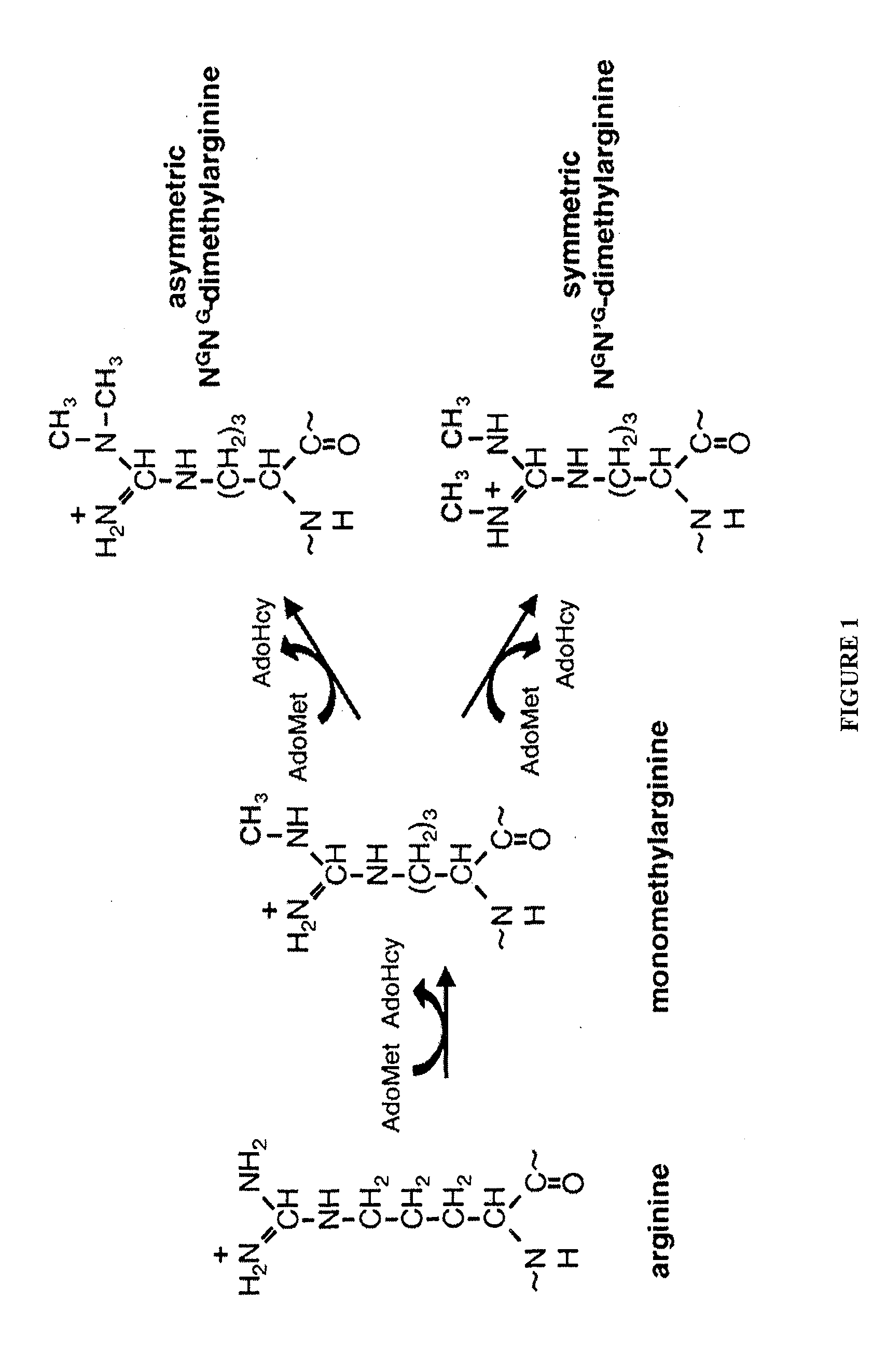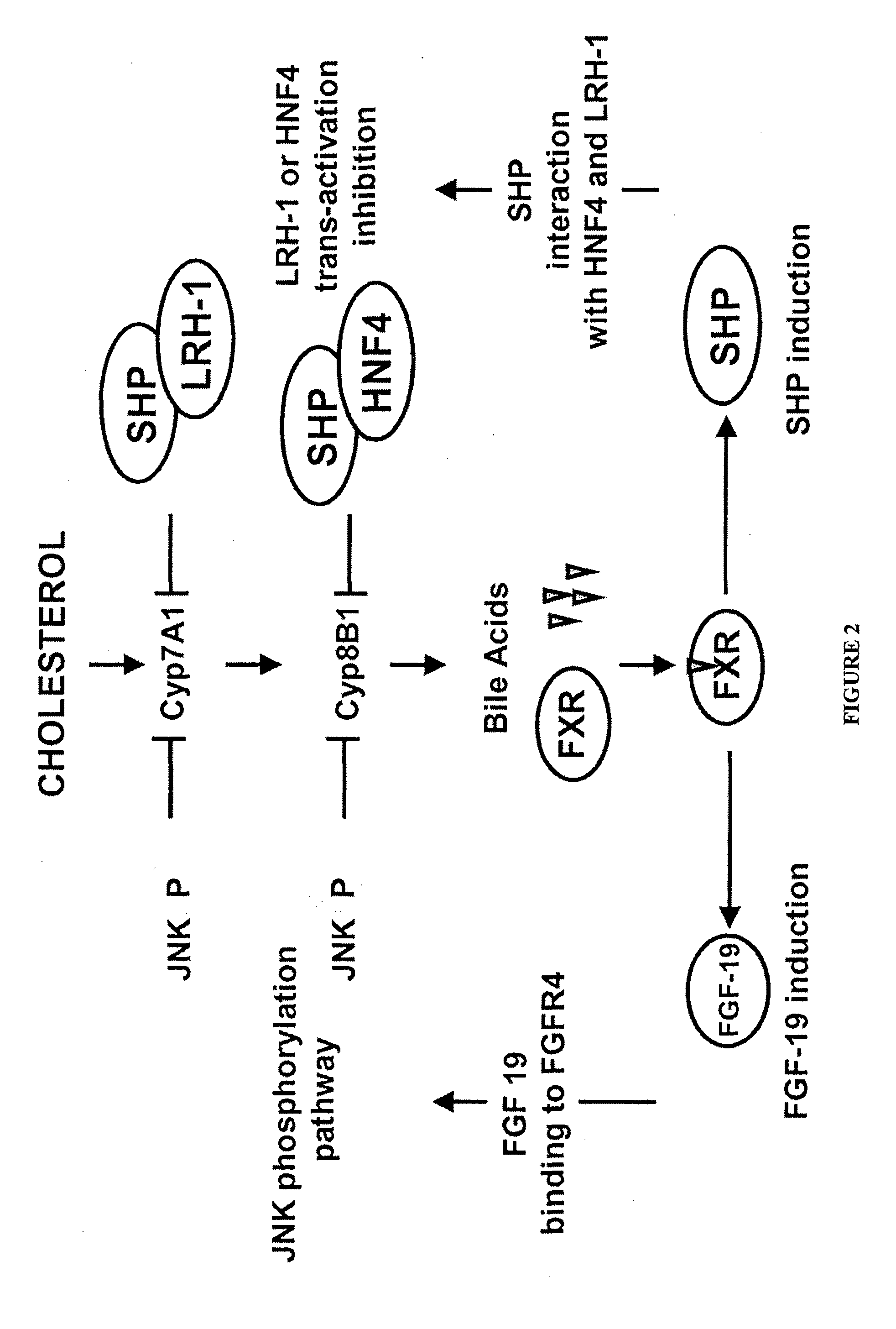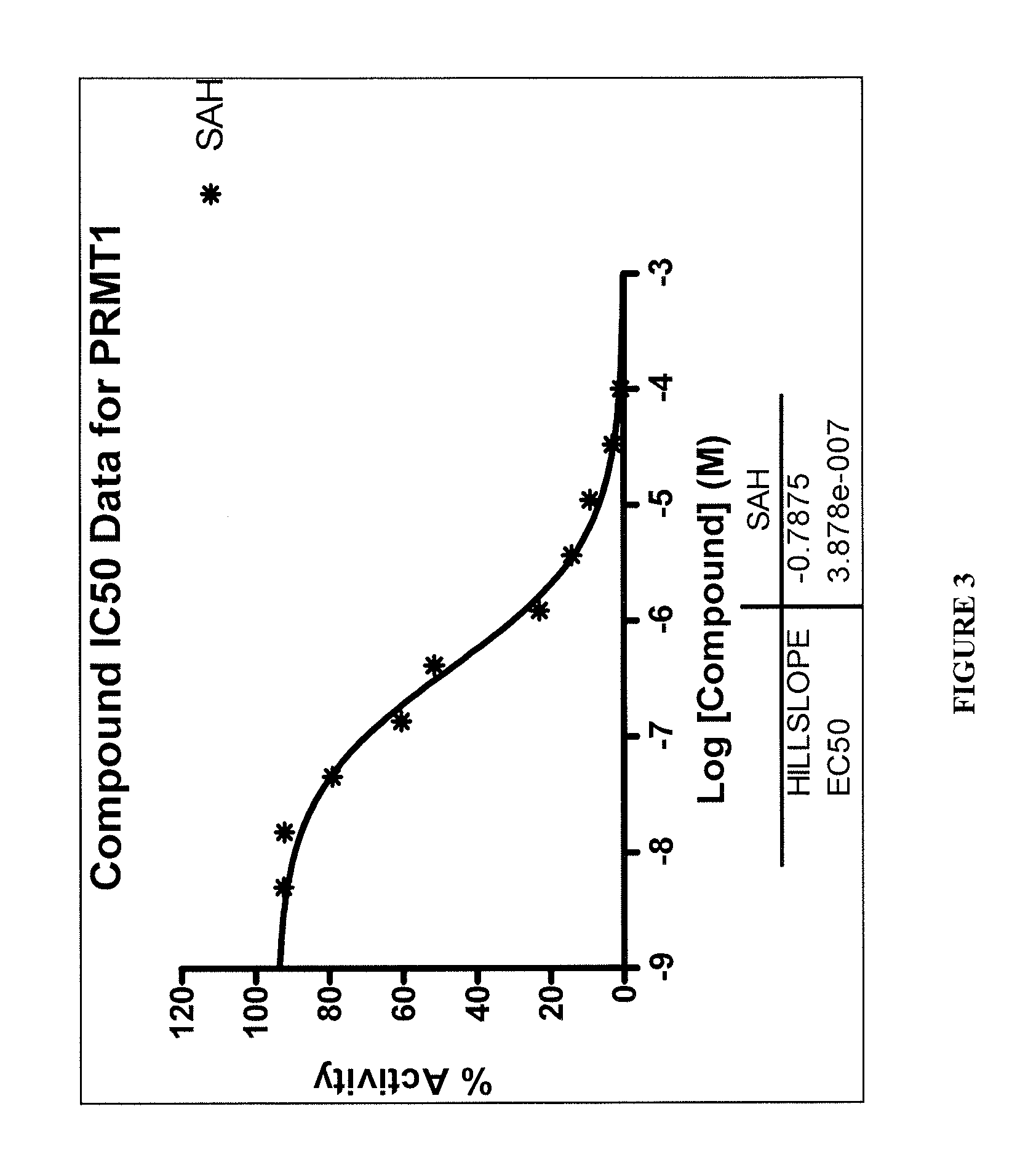Therapeutic compounds that suppress protein arginine methyltransferase activity for reducing tumor cell proliferation
a technology of arginine methyltransferase and therapeutic compounds, which is applied in the field of epigenetic modifications of gene expression and therapeutic compounds, can solve the problems of chromatin condensation and obstruction of transcriptional activator binding, dna methylation often observed, and high restrictive environmen
- Summary
- Abstract
- Description
- Claims
- Application Information
AI Technical Summary
Benefits of technology
Problems solved by technology
Method used
Image
Examples
example 1
[0314]Compounds that affect bile acids, glucose metabolism and nuclear receptors were screened to identify any measurable effects against protein arginine methyltransferases PRMT1 (Genbank Accession No. NM_001536, SEQ ID NO: 1), PRMT5 (Genbank Accession No. NM_006109; SEQ ID NO: 2), PRMT5 (Genbank Accession No. NM_006109, SEQ ID NO: 3), / MEP50 (Genbank Accession NO. NM_024102; SEQ ID NO: 4), and PRMT6 (Genbank Accession No. NM_018137; SEQ ID NO: 5). The screen included two PPAR agonists, a TGR5 agonist, an LXR agonist, an FXR agonist, metformin, chenodeoxycholic acid (CDCA) and obetocholic acid (OBCA).
[0315]3-(2-chlorophenyl)-N-(4-chlorophenyl)-N,5-dimethyl-4-isoxazolecarboxamide, CAS 1197300-24-5 (Cayman Chemical Co., 16291), a TGR5 agonist, was supplied as a crystalline solid. It is a synthetic small molecular activator of TGR5, a G-protein coupled receptor for bile acids) (pEC50=6.8-7.5), which is reported to improve glucagon-like peptide 1 (GLP-1) secretion by increasing intrace...
example 2
[0329]
TABLE 4Methyltransferase Profiling Reportfor: PRMT5 / MEP50Conc. (M)GW 4064GW 3965Conc. (M)SAHRaw data1.00E−042495464311.00E−04236373.33E−055275286025613.33E−05513471.11E−055154445442811.11E−051020873.70E−064531134940193.70E−061839461.23E−064631094633661.23E−062689334.12E−074354504537634.12E−073195171.37E−074371274540531.37E−073844454.57E−084257434348624.57E−084240691.52E−084243874171001.52E−083944755.08E−094141104330855.08E−09401476DMSO439696444461DMSO408103% Activity1.00E−045.701.471.00E−045.403.33E−05120.51137.653.33E−0511.731.11E−05117.75124.341.11E−0523.323.70E−06103.51112.863.70E−0642.021.23E−06105.80105.861.23E−0661.444.12E−0799.48103.664.12E−0772.991.37E−0799.86103.731.37E−0787.834.57E−0897.2699.344.57E−0896.881.52E−0896.9595.291.52E−0890.125.08E−0994.6098.945.08E−0991.72DMSO100.45101.54DMSO93.23HILLSLOPE−12.23−24.99−0.78IC50 (M)7.92E−058.42E−052.71E−06*Data excluded from curve fit
[0330]These data show that GW4064 and GW3965, the two test compounds that hit PRMT1:5, have...
example 3
Inhibition of Cancer Cell Proliferation
[0331]A cell proliferation assay can be employed to determine inhibition of cancer cell proliferation by the test compounds of Example 1. For example, cancer cell lines such as CaCo2 (colon), PC-3 (prostate), MCF7 (breast), MeLa (cervical), TOV-112D (ovarian), NCI-H69 (small cell lung), A 549 (non-small cell lung), SK-MEL-24 (melanoma), SNF96.2 (nerve / Schwann cell), HT-1376 (bladder), A498 (kidney), HEPG2 (liver), PANC-1 (pancreas) and AGS (stomach) can be obtained from ATCC, seeded in 96-well plates, and cultured overnight. Cell cultures can be exposed to various concentrations of the test compounds for specified treatment intervals. Proliferation of cancer cells can be determined by 3-[4,5-dimethylthiazol-2-yl]-2,5-diphenyltetrazolium bromide (MTT) assay (Life Technologies, Grand Island, N.Y.). Briefly, for adherent cells, medium is removed and replaced with 100 μL of fresh culture medium. For non-adherent cells, microplates are centrifuged t...
PUM
| Property | Measurement | Unit |
|---|---|---|
| Fraction | aaaaa | aaaaa |
| Fraction | aaaaa | aaaaa |
| Fraction | aaaaa | aaaaa |
Abstract
Description
Claims
Application Information
 Login to View More
Login to View More - R&D
- Intellectual Property
- Life Sciences
- Materials
- Tech Scout
- Unparalleled Data Quality
- Higher Quality Content
- 60% Fewer Hallucinations
Browse by: Latest US Patents, China's latest patents, Technical Efficacy Thesaurus, Application Domain, Technology Topic, Popular Technical Reports.
© 2025 PatSnap. All rights reserved.Legal|Privacy policy|Modern Slavery Act Transparency Statement|Sitemap|About US| Contact US: help@patsnap.com



